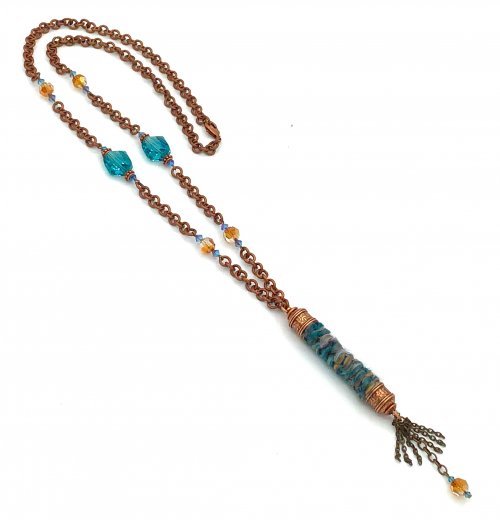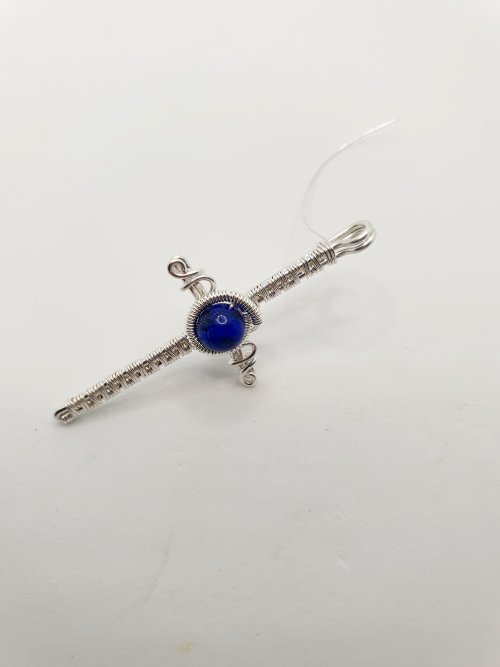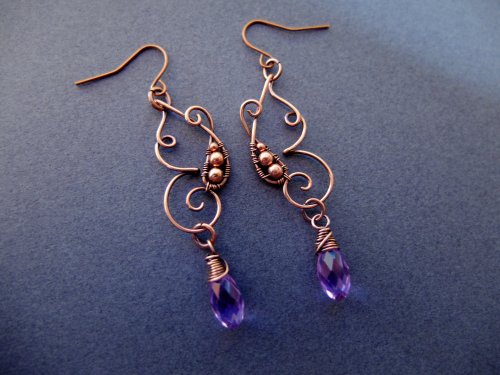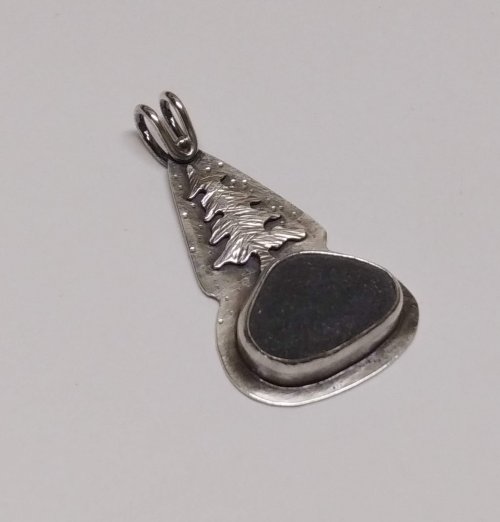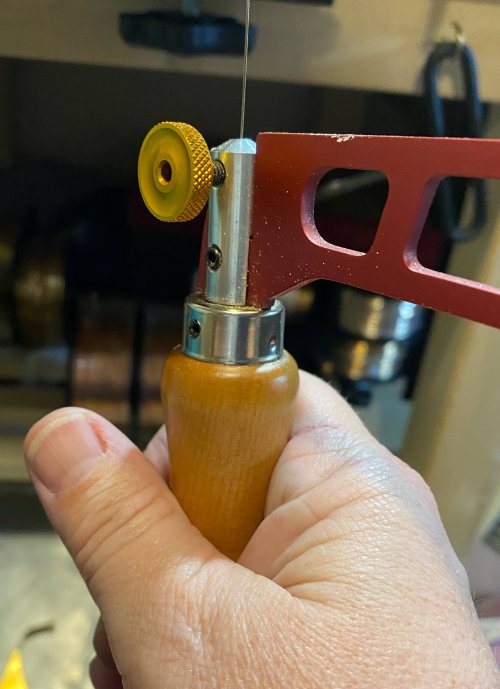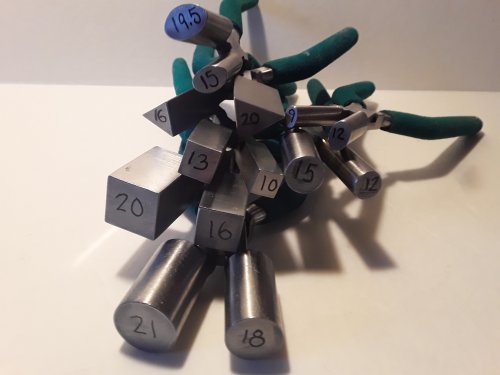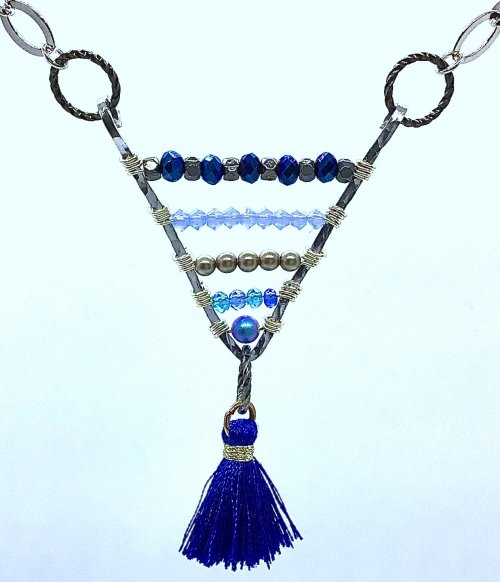Turquoise
I have been asked to write an article about the beauty and history of turquoise. This is a stone I am partial to and always buy whenever I can afford it. But writing an article is no easy task as this gemstone has a long history that cannot be covered in a short article. I will try and hit on some of the high spots and provide some other sources for further reading and learning.
Turquoise is formed by the action of percolating groundwater in aluminous rocks where copper is present, as in the vicinity of copper deposits. Turquoise consists of the chemical elements of copper, aluminum, phosphorous, hydrogen and oxygen in the form of water. Most turquoise is found in alteration zones, where the native origin rocks have been altered through the intrusion of other rocks from some volcanic or thermal influence. The colors of turquoise can vary from deep blue to deep green with every variation in between. Generally the more copper in the molecule, the bluer the turquoise. Iron in the stone makes it greener. More moisture being present will cause turquoise to turn greener in color.
Turquoise is a non-translucent stone whose most valuable specimens are a robin's egg blue or deep-blue azure. Most of the finer specimens in this color spectrum come from Iran with the turquoise found in the Western Hemisphere exhibiting a spectrum of shade variances from blues to greens. North American specimens also contain impurities that form matrix streaks within the stones. The veins are inclusions from nearby rock fragments or oxides and form during the creation of the turquoise. These veins may contain sandstones, limonite, malachite, chrysocolla jaspers or psilomelane. The veins, in some stones, interlock in patterns to form "spider-web" turquoise.
There are four types of turquoise that you will see in the jewelry market:
Natural: |
This comes directly from the mine and has no man made treatment or additives other than a polishing compound being used if shaped and polished. Most stones in this state are very close to gem quality. |
Stabilized: |
This is a natural turquoise usually seen in nugget form but does not hold a luster. It has been submerged into a stabilizing compound and dried out and prepared for jewelry. This turquoise has not been altered in any way, simply the pores of the stone have been filled with a clear resin that makes the stone useable. Colored stabilized stones are altered and the color has been added using the same process. |
Treated: |
This form of color enhancement has been used for thousand of years. It is done by submerging the rock into animal fat or vegetable oil and later air dried. This treatment will not last long. |
Synthetic or Fake |
Ceramics, bone, glass, celluloid, plastic and even other stones are used to imitate turquoise. Case in point: dyed howlite, magnesite, turquenite and dyed chalcedony are prime examples of materials used to imitate turquoise. (Please see Editor's Note below) |
I also feel that perhaps reconstituted Turquoise should appear in the above chart under stabilized since the process consists of pulverizing pieces of turquoise that are then stabilized and hardened with resins to achieve a natural turquoise appearance. Resin-reconstructed turquoise usually has an odor that allows for detection.
Plus, there are minerals that are often confused with turquoise, such as Amazonite, Prosopite, Lazulite, Chrysocolla, Serpentine, Smithsonite, Faustite and Variscite. Bone Turquoise or Vivianite can leach into fossils and turn them a blue that is close to Turquoise in color.
History of Turquoise
Turquoise is a gemstone that has a history that dates back as far as 6,000 years ago. It has been unearthed in tombs from ancient Egypt, dating back to the second ruler of the Egypt's First Dynasty, approximately 5500 B.C., from the tombs of Aztec kings and referred to by such intellectuals as Aristotle and Pliny. Marco Polo took time to write about it in his journals and turquoise was likely found and used by early man. Turquoise is and has always been considered a "stone of life" by many cultures and the vastness of where it is found, the myth and legends behind it and the variations in colors, locals and uses is in itself a learning journey.
The prehistoric peoples of the Western hemisphere knew about turquoise; pieces have been found in burial and archeological sites throughout the two continents. We are well aware of turquoise coming from our own Southwest states but probably do not know that the Anasazi and Hohokam Indian tribes mined turquoise; that prehistoric people mined turquoise at Cerillos and the Burro Mountains of New Mexico, Kingman and Morenci in Arizona, and the Conejos areas of Colorado. And that these early people traded turquoise with other people as it was a popular trade item resulting in turquoise being found in archeological sites hundreds of miles away from it source of origin such as with the unearthing of Aztec burial sites where turquoise was used to decorate the deceased.
Middle East |
Egypt |
Turquoise mining began in the Sinai Peninsula around 5500 B.C. The stones taken from these mines served jewelry, amulet and cosmetic purposes for millennia. The world's oldest example of turquoise and gold jewelry comes from the excavated tomb of Egyptian Queen Zer (5500 BC) in the form of a bracelet. |
|
||
Persia |
The legendary home of the world's finest turquoise is the mines at Nishapur. Turquoise became a major trade and barter item for the Persians. Persian stones were much coveted in Afghanistan and as far north as Siberia. Uses included art, medicine, and jewelry in India. |
|
|
|
|
Asia |
China |
The history of turquoise in China dates back to the 13th century A.D. Most stones came from trade with the Persians, Turks, Tibetans, and the Mongols, despite mining being done in China. Used mostly for carving and for creating other art and decorative items, turquoise did not gain a precious stone status with the Chinese as jade did. |
|
||
Tibet |
Tibetan turquoise usually has a green cast, being a very hard stone with a significant amount of the "spider" webbing. Highly revered by the Tibetans, who ranked it accordingly in six grades, the most expensive being valued above gold. A piece of turquoise is carried throughout life and was even used as currency in many areas of Tibet. |
|
It should be noted that The Bible in the book of Exodus contains an important reference to Turquoise. The Breastplate of the Hebrew High Priest Aaron contained twelve stones set in four rows. Turquoise was the first stone on the second row.
Turquoise did not gain favor with Western Europe fashion until the late middle ages, despite this stone having been mined in Siberia as early as 500 BC. During the Middle Ages trade with the Near and Far East had increased, with stones being brought back by Venetian Traders who obtained them from the Turkish traders, who bought it from the Persian mines. It should be noted that William Shakespeare's play The Merchant of Venicefeatures a turquoise ring.
The Aesthetic Period (1880-1901) responded to England's Queen Victoria's mourning and jewelry became more whimsical with turquoise playing a large role during this period but gaining a stronger footing in the Romantic Period (1837-1860) as an accent to fine gems set in light gold work.
Turquoise in the United States
Most Turquoise deposits are in arid to semi-arid regions in igneous rock formations that contain high copper concentrations. Because of this, the areas of Turquoise deposits are spread out around the world. Most of us are more familiar with the deposits found in our own hemisphere in such states as New Mexico, Nevada, Arizona, Virginia, California and Colorado. American Turquoise specimens can be found in many colors, including deep blue, light blue, greenish-blue shades, green and even yellow depending on the presence of copper or iron or even zinc. The blue shades are the most prized and are denoted as "turquoise".
Now, when one gets into the different mines in the United States, the locations and descriptions get a bit confusing as some mines are no longer open or producing turquoise available to the rock hound or jewelry designer. The examples that are available for purchase from now closed mines command high prices due to the scarcity of the material. There are still mines open that are producing quality turquoise and can be purchased at the larger gem and mineral shows and in some cases, there are even places open where you can experience the adventure and mystery of turquoise by rock hounding for it yourself.
The following chart offers a breakdown of the mines located in each of the four states here in the United States. To learn more about these mines and the turquoise they are known for having produced or are still producing, additional research would need to be done. I will list several recommended books on turquoise at the end of this article. I am doing so simply because with the number of mines located in Nevada alone, this article would be way to long for casual reading.
| Colorado: | Cripple Creek Turquoise Mine | Crow Springs Turquoise Mines | Kings Manassa Turquoise Mine |
| Nevada: | Ajax Turquoise Mine Blue Diamond Blue Gem Mine Candelaria Mine Carico Lake Mine Pilot Mountain Damale Turquoise |
Darling Darlene Dry Creek Turquoise Easter Blue Turquoise Enchantment Turquoise Fox Turquoise Godber/Burnham Indian Mountain |
Lander Blue Lone Mountain Mastrada Turquoise Orvil Jake Turquoise Stennich Turquoise Royston Turquoise |
| Arizona: | Turquoise Mountain Kingman Turquoise Bisbee Turquoise |
Sleeping Beauty Pinto Valley Castledome Mine |
Ithaca Peak Morenci |
| New Mexico: | Cerrillos Turquoise | Hachita Turquoise | Tyrone Turquoise |
Whatever the colors, turquoise attracts each of us for its uniqueness and mystery. Some of us will favor the brilliant blues while others are drawn to the yellow-greens or the blue-greens. Whichever we choose, we will become fascinated by its history and myths as we further research this gemstone.
The long standing history that turquoise has with Native Americans spans over 1,000 years as it was used extensively for protection and healing. It found its way into religion, art, trade, treaty negotiations and jewelry. It is said to be a harmonizing stone that helps alleviate nervousness, helps with problem solving, can relieve stress from a hectic life, and promote friendship. Well known for its protective qualities, turquoise stones are carried by many cultures at all times to ward off mischievous or harmful spirits.
Recommended Reading:
 |
The Allure of Turquoise ISBN-10: 0937206873 First published in 1995, The Allure of Turquoise includes articles ranging from geology and mining, turquoise as used and applied by Native Americans, how to detect manufactured fakes and more. Turquoise is the state gem of New Mexico and this book makes a fascinating read to anyone wanting to learn more about this gem stone. |
 |
Turquoise Unearthed ISBN-10: 1887896333 |
Editor's Note:
As a retailer, it is often difficult to determine the true nature of a stone which a wholesaler or manufacturer may insist is genuine. Despite efforts to the contrary, many "Industry" names have made their way into common knowledge, resulting in the belief that some stones, such as "African Turquoise" and "Yellow Turquoise" are true variations of the genuine stone. We have made every effort to determine the stones sold under these names. Yellow Turquoise is not turquoise, but rather a jasper, serpentine, or calcite stone, that may have been dyed. African Turquoise is a jasper that shares a similar matrix to true turquoise. Chinese Turquoise is usually genuine turquoise, and may be treated with wax, oil, or plastic resins to make it more durable; may be dyed to enhance the color. Howlite and Magnesite are stones that are naturally white or gray in color; these two stones are commonly dyed to imitate turquoise.








